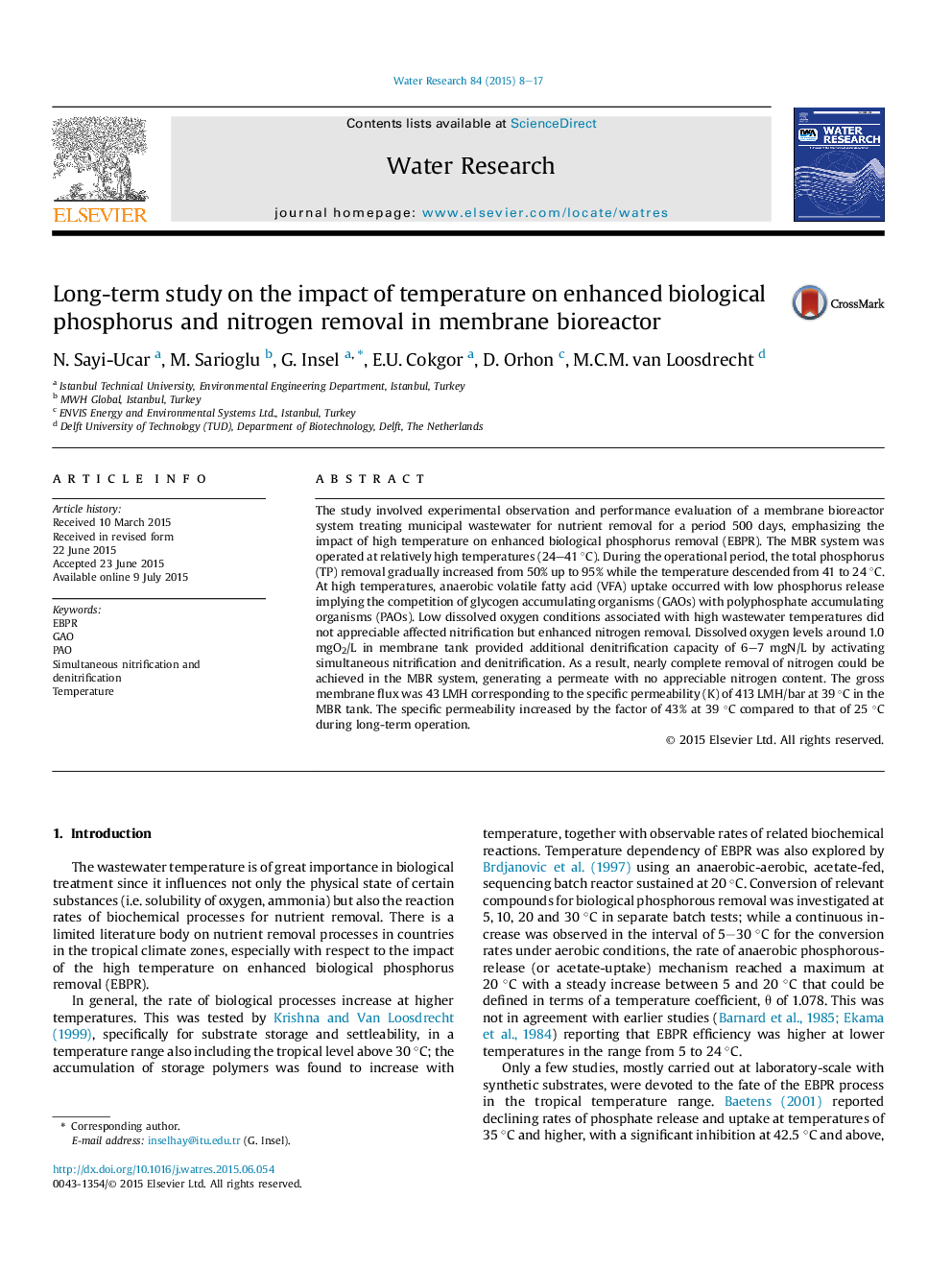| کد مقاله | کد نشریه | سال انتشار | مقاله انگلیسی | نسخه تمام متن |
|---|---|---|---|---|
| 4481067 | 1623084 | 2015 | 10 صفحه PDF | دانلود رایگان |
• Long-term temperature (24–41 °C) impact on P&N removal was studied in pilot MBR.
• EBPR efficiency decreased from 95% to 50% for sewage temperatures above 35 °C.
• At low DO levels, 100% TN removal was achieved due to SNdN sustained in the pilot.
• At 41 oC, PAO activity was impaired and reduced due to simultaneous GAO competition.
• Temperature induced DO variation did not exert an adverse effect on nitrification.
The study involved experimental observation and performance evaluation of a membrane bioreactor system treating municipal wastewater for nutrient removal for a period 500 days, emphasizing the impact of high temperature on enhanced biological phosphorus removal (EBPR). The MBR system was operated at relatively high temperatures (24–41 °C). During the operational period, the total phosphorus (TP) removal gradually increased from 50% up to 95% while the temperature descended from 41 to 24 °C. At high temperatures, anaerobic volatile fatty acid (VFA) uptake occurred with low phosphorus release implying the competition of glycogen accumulating organisms (GAOs) with polyphosphate accumulating organisms (PAOs). Low dissolved oxygen conditions associated with high wastewater temperatures did not appreciable affected nitrification but enhanced nitrogen removal. Dissolved oxygen levels around 1.0 mgO2/L in membrane tank provided additional denitrification capacity of 6–7 mgN/L by activating simultaneous nitrification and denitrification. As a result, nearly complete removal of nitrogen could be achieved in the MBR system, generating a permeate with no appreciable nitrogen content. The gross membrane flux was 43 LMH corresponding to the specific permeability (K) of 413 LMH/bar at 39 °C in the MBR tank. The specific permeability increased by the factor of 43% at 39 °C compared to that of 25 °C during long-term operation.
Figure optionsDownload high-quality image (356 K)Download as PowerPoint slide
Journal: Water Research - Volume 84, 1 November 2015, Pages 8–17
